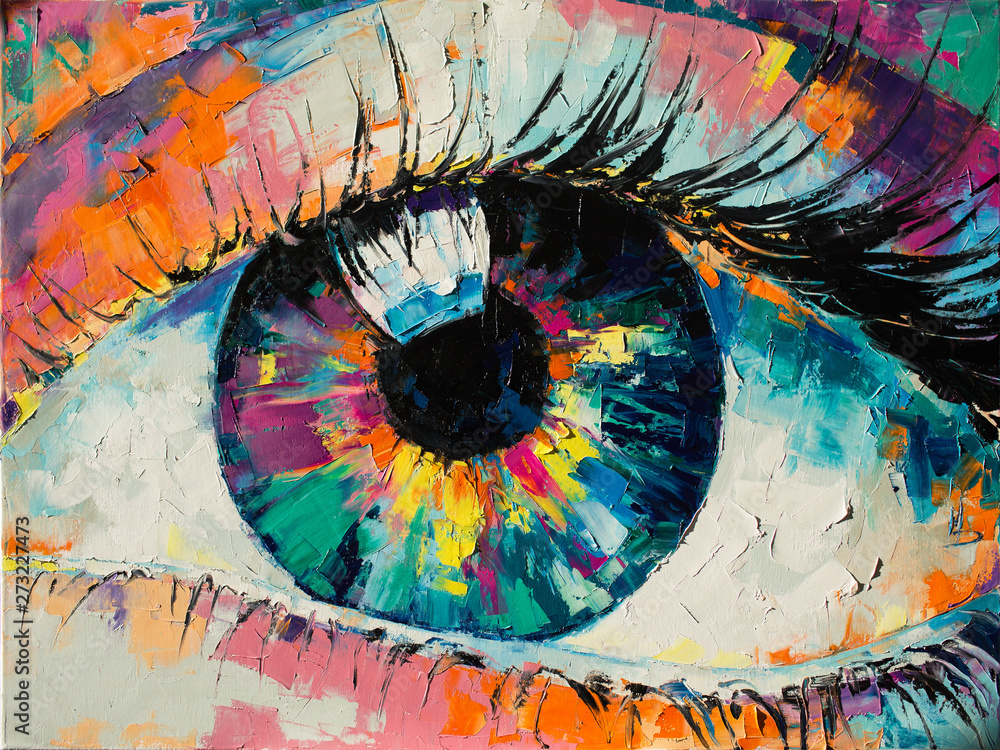Elegant Handcrafted Oil Paintings for Sale from Ateliers
Elegant Handcrafted Oil Paintings for Sale from Ateliers
Blog Article
Exploring All Regarding Oil Paints: An Overview to Recognizing Their Elegance and Worth
Oil paintings have actually mesmerized target markets for centuries, offering a glimpse into the creative mastery of various ages. Their abundant background is linked with innovative methods and extensive emotional expression. Understanding the materials and methods behind these art work can improve appreciation. Additionally, the marketplace for oil paintings provides opportunities for capitalists and collection agencies alike. As one discovers this remarkable globe, the question arises: what makes an oil paint absolutely useful?
The History of Oil Paint: A Trip With Time
Oil paint has origins that date back to ancient times, it absolutely flourished during the Renaissance, when musicians found its flexibility and abundant color possibility. Early instances can be traced to the 7th century, with methods advancing notably throughout societies. The tool ended up being famous in Northern Europe in the 15th century, specifically with the jobs of artists like Jan van Eyck, who originated its usage for comprehensive realism and vibrant hues. This period noted a separation from tempera paints, permitting better depth and texture. As oil painting spread, it influenced plenty of musicians, resulting in work of arts by popular figures such as Leonardo da Vinci and Rembrandt. The medium's legacy proceeds, forming the art world well right into contemporary times.
Recognizing Oil Paints: Materials and Techniques
As musicians explore the globe of oil paints, they run into a diverse array of materials and techniques that specify this tool. The main components of oil paint include pigments, which provide shade, and drying out oils, such as linseed, that bind the pigments and help with application. Various ingredients can change the paint's texture and drying time, boosting adaptability. Strategies like glazing, where clear layers are developed, and impasto, which includes using thick paint, enable for various aesthetic impacts. In addition, the usage of brushes, combination blades, and also fingers can create special structures and surfaces. Understanding these products and techniques enables musicians to fully reveal their imagination and attain the desired effect in their artwork.
The Function of Shade in Oil Paintings
Color plays a pivotal role in oil paints, affecting both visual charm and psychological resonance. Comprehending shade theory fundamentals, consisting of the partnerships in between tones, can enhance a musician's capacity to convey state of mind and environment. Additionally, understanding color blending techniques permits for higher deepness and richness in a painting's palette.

Color Concept Essential
Understanding color concept is essential for artists collaborating with oil paints, as it forms the structure for producing harmonious and aesthetically interesting compositions. Color theory incorporates the research study of how colors engage, the color wheel, and the relationships in between main, secondary, and tertiary shades. Artists make use of complementary colors to improve contrasts and create focal points, while similar colors advertise unity and cohesiveness within a piece. Furthermore, the ideas of cool and warm colors influence the understanding of depth and room in a painting. Realizing these concepts permits musicians to manipulate shade properly, assisting the visitor's eye and connecting their intended message. Mastery of shade theory inevitably enriches a musician's ability to communicate feelings and ideas through their work.
Emotional Impact of Shade
The psychological influence of shade in oil paints plays an important function in how customers perceive and connect with art work. Shades stimulate specific sensations and state of minds, influencing the viewer's mood. Warm colors like reds and oranges can develop a sense of warmth and power, while great tones such as blues and environment-friendlies often evoke peace or self-contemplation. Artists strategically pick color palettes to enhance narrative components, assisting the target market's psychological trip. The saturation and comparison of shades even more enhance these results, drawing focus and developing focus. Eventually, the interplay of shades in oil paints not just boosts their aesthetic charm yet also functions as a powerful medium for emotional expression, enriching the visitor's experience and analysis.
Color Combining Techniques
While lots of elements of oil paint add to the total make-up, understanding shade mixing strategies is crucial for achieving wanted effects and depth. Shade mixing can be approached with numerous techniques, including the additive and subtractive processes. Additive mixing involves incorporating colors of light, while subtractive blending counts on pigments, where shades blend to develop brand-new tones. Musicians often make use of a restricted scheme to create unified works, recognizing the connections in between primary, secondary, and tertiary shades. Techniques such as glazing and scumbling additionally enhance depth and luminosity. By masterfully blending shades, an artist can stimulate emotions, develop prime focus, and achieve a sense of realism, eventually raising the painting's visual and psychological influence.
Famous Oil Painters and Their Iconic Functions

Famed for their proficiency of shade and strategy, oil painters have produced some of the most popular artworks in background. Prominent artists like Vincent van Gogh mesmerized target markets with his stirring brushwork in "Starry Evening," while Claude Monet's "Perception, Dawn" laid the foundation for Impressionism. Leonardo da Vinci's "Mona Lisa" stays an enduring symbol of imaginative wizard, showcasing his skill in capturing human expression. Rembrandt's "The Night Watch" shows his innovative use of light and darkness. Other remarkable numbers consist of Pablo Picasso, that reinvented contemporary art with his strong trial and error in works like "Les Demoiselles d'Avignon," and Georgia O'Keeffe, whose dynamic depictions of landscapes and flowers assisted specify American modernism. Each musician's special design added considerably to the oil painting landscape.
How to Evaluate the High Quality of an Oil Paint
Reviewing the top quality of an oil painting involves a cautious assessment of workmanship methods, in addition to an evaluation of shade and composition. Observing brushwork, layering, and the application of paint can disclose the artist's ability level. Furthermore, the interaction of colors and the total arrangement of elements add significantly to the paint's visual value.
Analyzing Craftsmanship Techniques
A meticulous assessment of workmanship strategies is essential for figuring out the quality of an oil paint. Critics must first check out the application of paint; thick, textured brushstrokes might recommend a competent hand, while excessively consistent applications might show a lack of deepness. oil paintings for sale. The layering technique is additionally important; the presence of glazes and differed density can improve luminosity and intricacy. In addition, the top quality of the materials made use of, such as the canvas and pigments, plays a significant duty in durability and total aesthetic. Attention to information in elements like edges and changes between colors shows the musician's dedication to their craft. Ultimately, these techniques contribute to the painting's psychological effect and market price, functioning as indicators of the musician's ability and intent
Assessing Color and Make-up
While assessing the high quality of an oil paint, one should concentrate on the interaction of shade and composition, as these aspects are fundamental to the artwork's overall impact. Color choices can establish and evoke feelings state of mind; consequently, the artist's combination ought to be taken a look at for harmony and contrast. A healthy make-up routes the viewer's eye and produces a sense of unity. Artists often utilize strategies like the policy of thirds or leading lines to boost visual interest. In addition, the use of light and darkness can include deepness, improving the three-dimensionality of the paint. Eventually, a successful oil paint marries color and structure, involving the audience and welcoming a deeper gratitude of the musician's vision and method.
Taking care of and Preserving Oil Paintings
Correct treatment and preservation of oil paints is important for maintaining their stability and durability. To secure these art work, it is essential to present them far from straight sunlight, which can create fading and discoloration. Maintaining a secure environment with regulated temperature level and moisture further help in avoiding damages. Cleaning up need to be done delicately making use of a soft, completely dry fabric, avoiding any type of extreme chemicals that might hurt the paint or varnish. Regular examinations for indications of damage, such as flaking or cracking, are recommended. When saving or transporting oil paints, proper cushioning and framework are essential to stay clear of physical damage. Inevitably, attentive care adds to the visual charm and value of oil paints over time.
The Marketplace for Oil Paintings: Accumulating and Spending
Recognizing the market characteristics for oil paints is crucial for capitalists and collectors alike. The value of these artworks is influenced by different elements, including the musician's reputation, historic value, and existing patterns. Enthusiasts typically look for pieces that resonate directly while considering possible appreciation in worth. Galleries and public auctions offer as main locations for purchasing and marketing, with rates varying based upon need and rarity. Purchasing oil paints requires study right into the market, along with an understanding of authenticity and provenance. In more info addition, arising musicians might provide opportunities for significant returns, while developed names can regulate high rates. Generally, a calculated strategy to gathering can yield both aesthetic satisfaction and financial benefits.

Regularly Asked Questions
What Are the Ecological Effects of Oil Paint Materials?
The environmental effects of oil painting materials consist of the release of unpredictable natural substances (VOCs), dangerous waste generation, and resource extraction for pigments. These elements contribute to air pollution and eco-friendly deterioration, elevating problems among environmentally mindful artists and consumers.
Exactly How Do Different Canvases Affect Oil Painting Results?
Various canvases influence oil painting results considerably. Structure, surface, and absorbency quality can alter paint application, drying out times, and color vibrancy. Musicians usually pick details canvases to attain desired impacts and enhance their imaginative expression.
Can Oil Paintings Be Restored if Damaged?
Oil paints can without a doubt be brought back if harmed. Professional conservators use numerous strategies to fix rips, tidy surfaces, and address staining, ensuring that the artwork retains its original beauty and worth for future generations.
What Are the Indicators of an Initial Oil Painting?
The indicators of an original oil paint consist of visible brush strokes, appearance variations, and an uneven canvas weave (oil paintings for sale). Additionally, credibility may be verified through provenance, trademarks, and the existence of a varnish layer special to oil tools
Exactly How Has Modern Technology Influenced Modern Oil Paint Techniques?
Innovation has actually considerably influenced modern-day oil painting methods by introducing electronic tools for preparation, enhanced products for appearance and longevity, and online platforms for offering and sharing art, consequently expanding artists' imaginative opportunities and audience get to. Oil paint has origins that date back to ancient times, it truly thrived during the Renaissance, when artists found its versatility and abundant shade capacity. The emotional effect of shade in oil paints plays a critical function in just how visitors attach and regard with art work. While several aspects of oil painting add to the total structure, mastering shade mixing strategies is necessary for achieving wanted results and depth. Evaluating the quality of an oil paint includes a mindful analysis of workmanship methods, as well as an analysis of color and composition. While evaluating the top quality of an oil paint, one need to focus on the interaction of shade and composition, as these elements are essential to the art work's overall effect.
Report this page